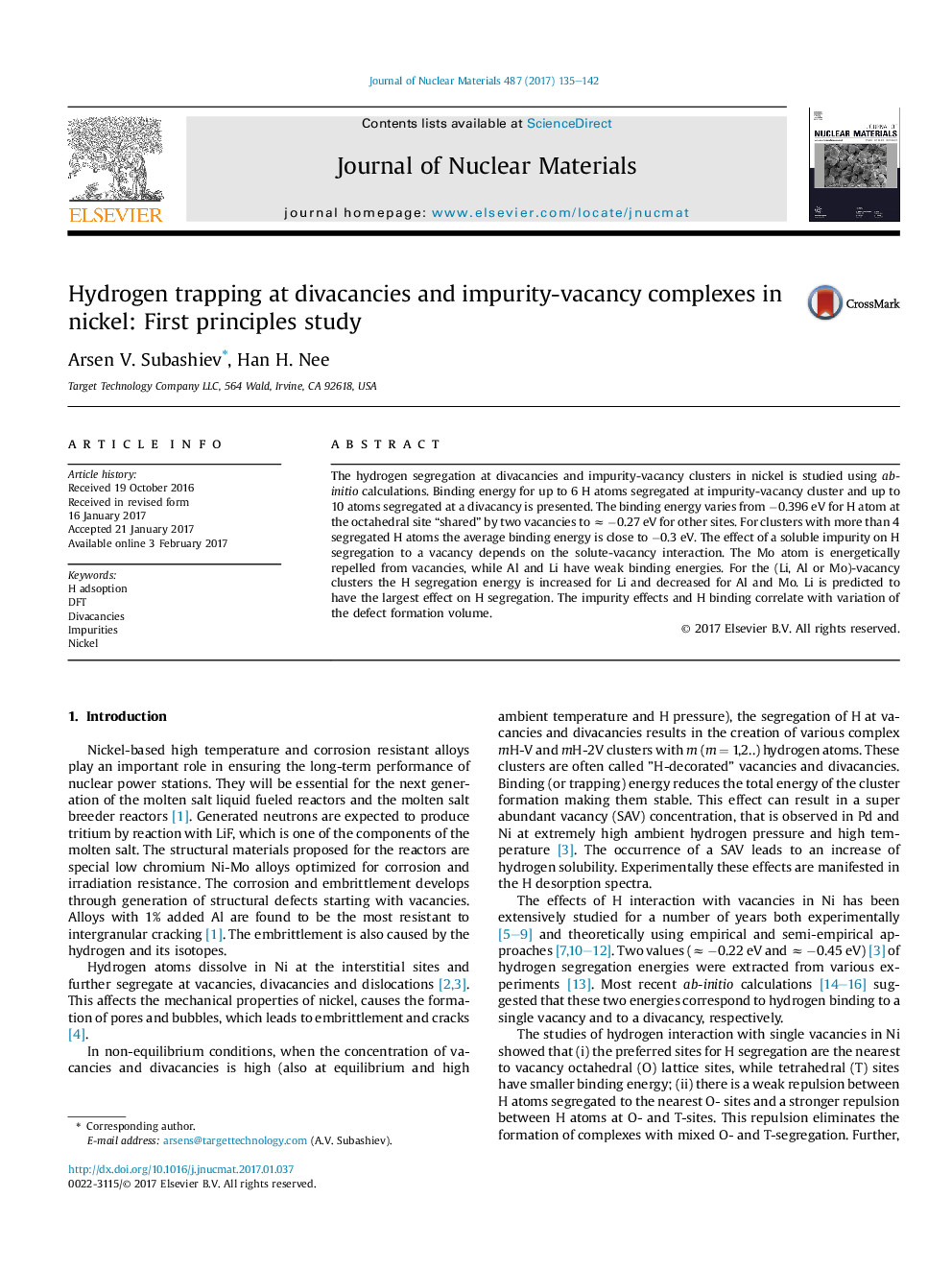| Article ID | Journal | Published Year | Pages | File Type |
|---|---|---|---|---|
| 5454154 | Journal of Nuclear Materials | 2017 | 8 Pages |
The hydrogen segregation at divacancies and impurity-vacancy clusters in nickel is studied using ab-initio calculations. Binding energy for up to 6 H atoms segregated at impurity-vacancy cluster and up to 10 atoms segregated at a divacancy is presented. The binding energy varies from â0.396 eV for H atom at the octahedral site “shared” by two vacancies to â â0.27 eV for other sites. For clusters with more than 4 segregated H atoms the average binding energy is close to â0.3 eV. The effect of a soluble impurity on H segregation to a vacancy depends on the solute-vacancy interaction. The Mo atom is energetically repelled from vacancies, while Al and Li have weak binding energies. For the (Li, Al or Mo)-vacancy clusters the H segregation energy is increased for Li and decreased for Al and Mo. Li is predicted to have the largest effect on H segregation. The impurity effects and H binding correlate with variation of the defect formation volume.
